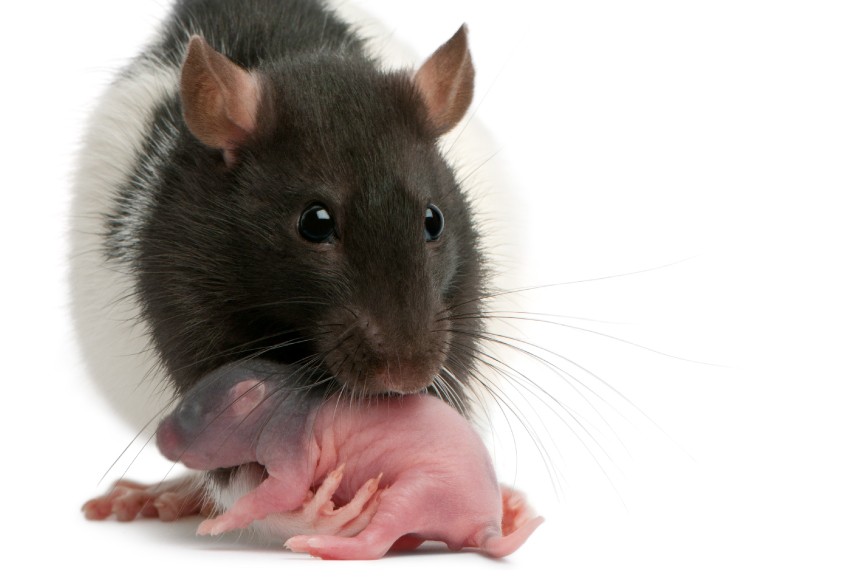
©iStock.com/GlobalP
THIS ARTICLE IS MORE THAN FIVE YEARS OLD
This article is more than five years old. Autism research — and science in general — is constantly evolving, so older articles may contain information or theories that have been reevaluated since their original publication date.
Exposing rats to prenatal stress along with a preterm labor drug may elicit seizures and autism-like behaviors in the pups, according to unpublished results presented yesterday at the 2015 Society for Neuroscience annual meeting in Chicago.
Some studies have hinted that exposure to environmental elements such as air pollution or infectious agents before birth raises the risk of autism. But how much any of these factors might contribute to the disorder remains unclear.
“Risk factors for autism seem to have a low incidence individually,” says Florencia Bercum, a doctoral student in Daniel Barth’s lab at the University of Colorado at Boulder, who presented the results. Few studies have explored combinations of environmental factors in animal models of the disorder, she says.
In the new study, the researchers subjected rats to prenatal stress and the asthma drug terbutaline, which is used to arrest preterm labor in women. These two environmental factors are likely to co-occur in people, says Bercum.
Maternal stress from various sources, such as infection and psychological distress, may boost autism risk. Terbutaline may also have ties with autism, but the evidence is less convincing.
Bercum and her colleagues exposed mother rats to a stress procedure each week throughout their pregnancies. One the first day of the week, the researchers briefly placed the rats in an unfamiliar box. The following day, they put the rats back in the box and gave them two foot shocks. They exposed the rats to the box each day for the rest of the week until the whole process restarted.
Just after the pups were born, the researchers injected them with terbutaline for four days, during the equivalent of the second and third trimesters of human pregnancy. The researchers then assessed the pups’ behavior with a battery of tasks.
Antisocial animals:
When the young pups were separated from their mothers, they emitted fewer high-pitched cries than pups that were not exposed to prenatal stress or that received only saline injections. As adults, the rats that received one or both of the environmental exposures squeaked less than controls. The reduced frequency of these ultrasonic vocalizations is thought to mimic social and communication deficits in autism.
When the researchers placed the adult rats in the same cage as a stranger rat, the rats that got one or both exposures spent less time interacting with the unfamiliar rat than control rats did. This result hints at social impairments in the treated animals. Rats exposed to both environmental conditions also displayed more repetitive grooming behavior than the controls or than those exposed to terbutaline alone. However, their behavior was not significantly different from the grooming in the rats exposed to stress alone.
The researchers also monitored some of the rats for seizures, which affect roughly one-third of individuals with autism, by recording their brain waves and videotaping their behavior.
Of the 10 rats exposed to both stress and terbutaline, 4 showed severe, grand mal-like seizures. The rest of the rats had seizure-like brain waves but no behavioral signs of seizures. In contrast, none of the rats in the other groups had seizures, and only three of them showed mildly abnormal brain activity.
The findings point to the value of testing realistic combinations of environmental factors in animals, in combination with genetic factors that may modulate the risk. Together, such influences may produce more significant symptoms than single exposures do. “We should be looking at double hits for all environmental risk factors for autism,” Bercum says.
For more reports from the 2015 Society for Neuroscience annual meeting, please click here.
By joining the discussion, you agree to our privacy policy.